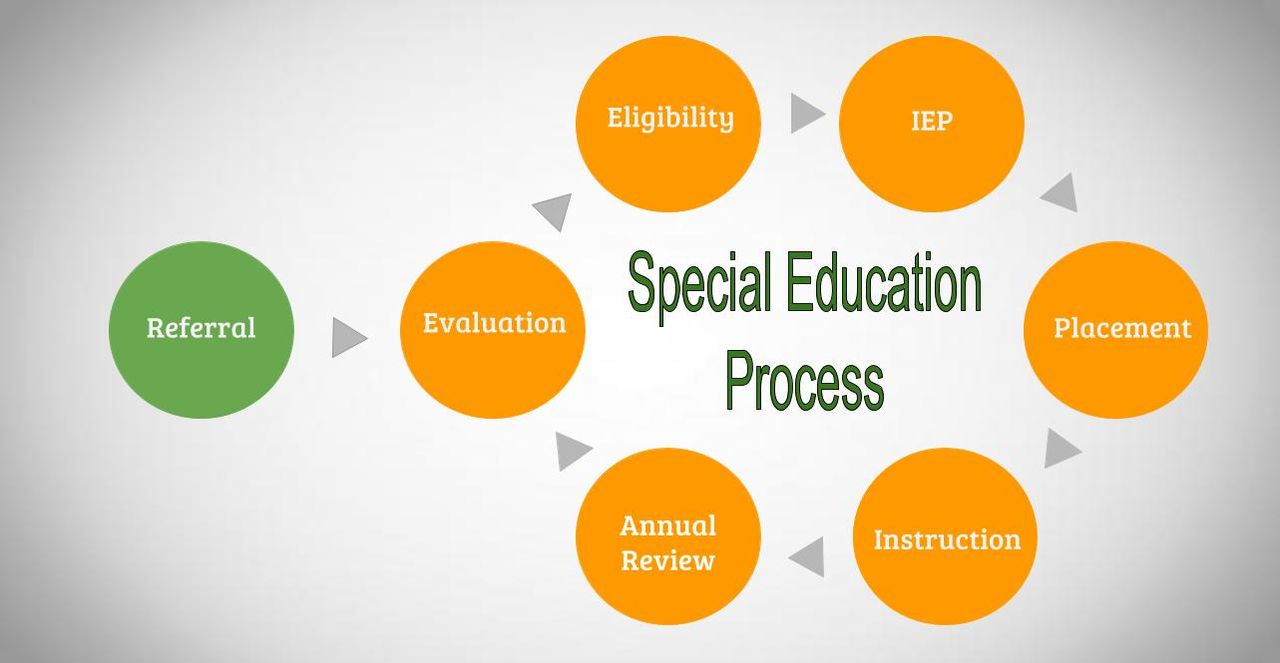Parents' IEP Reference Guide

Before the Individualized Educational Plan (IEP) Meeting
The following is an introductory video explaining what an IEP is, created by the Broadcast Educational Media Commission, the Ohio Department of Education, and WOUB Public Media:
The U.S. Department of Education states:
The Basic Special Education Process Under IDEA The writing of each student's IEP takes place within the larger picture of the special education process under IDEA. Before taking a detailed look at the IEP, it may be helpful to look briefly at how a student is identified as having a disability and needing special education and related services and, thus, an IEP.
- Step 1. Child is identified as possibly needing special education and related services.
- "Child Find." The state must identify, locate, and evaluate all children with disabilities in the state who need special education and related services. To do so, states conduct "Child Find" activities. A child may be identified by "Child Find," and parents may be asked if the "Child Find" system can evaluate their child. Parents can also call the "Child Find" system and ask that their child be evaluated. Or — Referral or request for evaluation. A school professional may ask that a child be evaluated to see if he or she has a disability. Parents may also contact the child's teacher or other school professional to ask that their child be evaluated. This request may be verbal or in writing. Parental consent is needed before the child may be evaluated. Evaluation needs to be completed within a reasonable time after the parent gives consent.
- Step 2. Child is evaluated.
- The evaluation must assess the child in all areas related to the child's suspected disability. The evaluation results will be used to decide the child's eligibility for special education and related services and to make decisions about an appropriate educational program for the child. If the parents disagree with the evaluation, they have the right to take their child for an Independent Educational Evaluation (IEE). They can ask that the school system pay for this IEE.
- Step 3. Eligibility is decided.
- A group of qualified professionals and the parents look at the child's evaluation results. Together, they decide if the child is a "child with a disability," as defined by IDEA. Parents may ask for a hearing to challenge the eligibility decision.
- Step 4. Child is found eligible for services.
- If the child is found to be a "child with a disability," as defined by IDEA, he or she is eligible for special education and related services. Within 30 calendar days after a child is determined eligible, the IEP team must meet to write an IEP for the child.
- Step 5. IEP meeting is scheduled.
- The school system schedules and conducts the IEP meeting. School staff must:
- contact the participants, including the parents;
- notify parents early enough to make sure they have an opportunity to attend;
- schedule the meeting at a time and place agreeable to parents and the school;
- tell the parents the purpose, time, and location of the meeting;
- tell the parents who will be attending; and
- tell the parents that they may invite people to the meeting who have knowledge or special expertise about the child.
Tips for Parents:
The Center for Appropriate Dispute Resolution in Special Education (CADRE) gives the following tips for parents to follow before an IEP meeting:
- Prepare notes about what you want to learn/find out at the meeting.
- Prepare notes about what you want your child to learn in school.
- Bring a picture of your child if they won’t be attending.
- “If this were your child…?” use this questioning strategy.
- Ask for additional time to consider important decisions if you’re uncomfortable making them on the spot at the meeting or want to get additional input.
- Look for opportunities to express gratitude to teachers and related staff.
- Bring someone along as a source of support.
- If compromising, define how and when to evaluate if compromise is working.
- Try to remain calm.
- Saying “I don’t know what you mean” is a demonstration of confidence and competence.